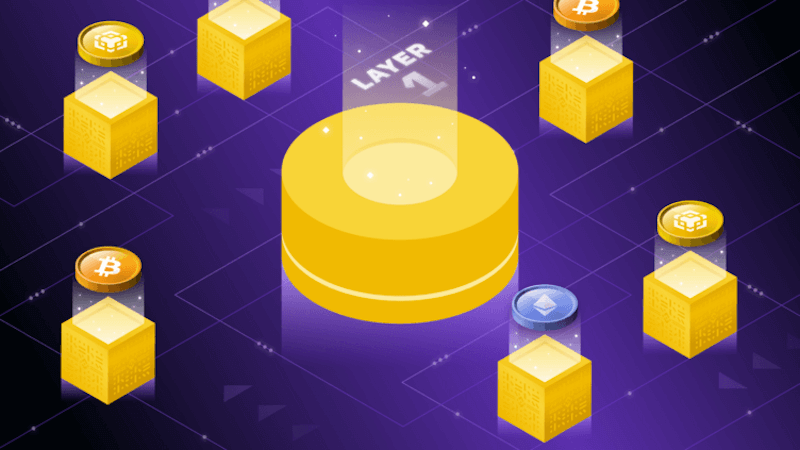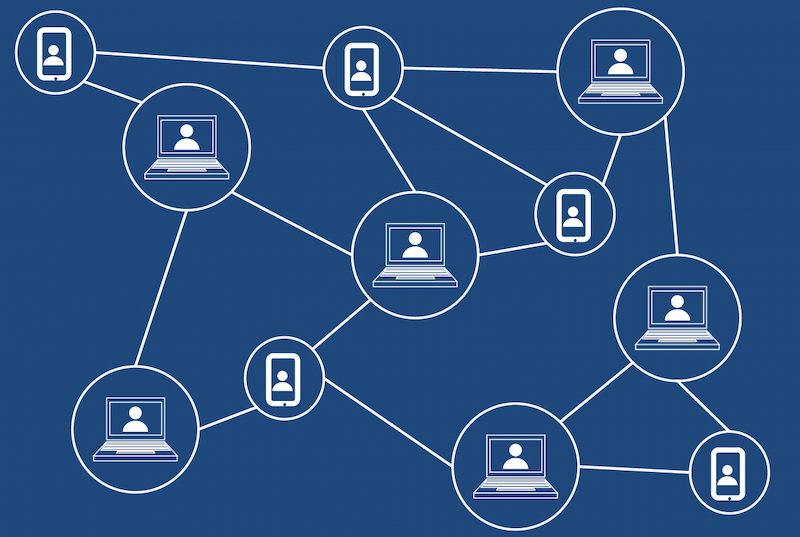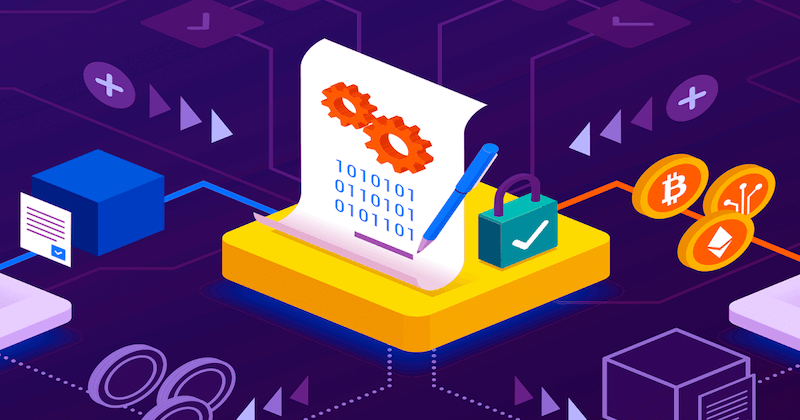Have you heard folks buzz about “layer 1 blockchain” and felt lost? Today, I’ll break down this cornerstone of crypto: what is a layer 1 blockchain. Imagine a digital ledger, keeping everything safe and sound. That’s layer 1 – the bedrock for all blockchain action! It’s where block mastery begins, from basic security to handling transactions. Ready to dive in and see how deep this rabbit hole goes? Stick with me, and I’ll unveil the secrets behind those cryptic codes!
Demystifying Layer 1 Blockchains: Core Principles and Functions
Defining Layer 1 Blockchain
Imagine a big book that everyone can write in. It’s always honest and never loses a page. This is like a layer 1 blockchain. It’s the first, main ground where all digital coin records live. Here, everyone agrees on what’s written without a boss to decide. They use math and rules to keep it safe and fair. Think of it as a city where each house has the same map. This map is the base layer blockchain technology. It is the heart of the blockchain world.
The Role of Consensus Mechanisms in Network Security
Keeping our city safe is key. That’s where consensus mechanisms come in. Like city guards, they make sure no one breaks the rules. People all over the world help by checking coins move right. They use a method called proof of work. It’s a tough math puzzle that locks in each trade. Think of mining process like digging for gold. You spend time and tools to find it. Some folks add new rules, like proof of stake. Here, it’s like putting your own coins on hold. If you vouch for bad trades, you lose them. This job is called staking in crypto.
In both ways, everyone keeps watch. With every trade, computers talk to agree. If they do, they add it to the ledger for all to see. This helps keep the network secure. It stops fakes and lies, making our city safer.
In our city, anyone can be a part of it. You can join in, speak up, and play a role in its growth. Together, we create a place of trust. We build it so our money moves fast and cheap. This place is new and it keeps getting better. It’s built by us, for all to use and enjoy.
It’s important to keep this city running well. We want to make space for more people and more homes. That’s why we work on scalability solutions. As the city grows, we want no jams or high costs. We aim to keep things running smooth and quick.
We’ve built an open space that’s open for all. This is what makes our city, our layer 1 blockchain, strong. Here, we are all in charge of our own coins. We prove that real people, working together, can build a future. A future we can trust, built on math, rules, and community.
The Anatomy of Layer 1 Protocols: How They Power Decentralized Networks
Understanding Blockchain Protocols and Ledger Technology
Think of layer 1 blockchain like the backbone for digital data. It’s the ground floor. It holds everything up. This base layer blockchain technology makes sure digital details are correct and safe. Just like a ledger in a store keeps track of sales, ledger technology in blockchains keeps track of who owns what, like magic internet money—crypto.
Every blockchain follows rules. We call these rules protocols. Some blockchains are like secret clubs—private. But the ones we talk about most, like the Ethereum blockchain, are open to all. These are public blockchains.
Now, layer 1 blockchains are not alone. They have friends— nodes. Nodes are like watchers. They keep an eye on things. They make sure all the rules are followed. They also help new blocks of info find their way into the blockchain.
Let’s not forget smart contracts. They’re like robots living in the blockchain. They follow commands and run programs without needing someone to press go. They make layer 1 blockchains really smart indeed.
Differentiating Between Proof of Work and Proof of Stake
Let’s dive into two big names: Proof of Work and Proof of Stake. These guys are called consensus mechanisms. They’re like a big digital game of “Simon Says” to agree on new blocks.
Proof of Work is the muscle. It uses the mining process. Computers solve tough puzzles. The first to solve gets to add a block and earns crypto. It keeps the network secure but uses loads of power. Bitcoin network uses Proof of Work—it’s the old-school way.
Now, we have a new kid on the block—Proof of Stake. Instead of puzzle solving, it’s all about staking in crypto. People lock up their own crypto to get a chance to add a block. The more you stake, the better your chances. It’s like putting down a promise. It uses less power and is getting popular in new blockchains.
When people add blocks, they get a reward. Gas fees in blockchain are the price you pay to make it all work. Think of it as postage for your digital package.
There’s more to say, but the basics are this: Layer 1 blockchains are the big players. They’re the foundation that holds up the house of cards—that’s the decentralized networks. They have rules, watchers, and smart little robots. And they all agree on things by playing games of muscle or promise. All this creates a world of digital give and take that’s open, flat out 24/7, and hard to mess with.
Smart Contracts and Scalability: The Building Blocks of Layer 1 Blockchain
Implementing Smart Contracts on Public Blockchains
Think of a smart contract like a vending machine. You pick a snack, pay the price, and get your treat. In the same easy way, smart contracts on blockchains like Ethereum let people agree and trade without a middle man. This is huge for trust on the internet!
Smart contracts run exactly as programmed, with no chance of fraud or third-party meddling. They’re key for making things work smoothly on base layer blockchain technology. This base layer is the first and main ground of a blockchain, where everything takes place.
For anyone new to this, a public blockchain is like an open book. Anyone can read it or write a little in it. This means more eyes to check on things and keep it honest. But it can slow down with more people using it, which is where the challenge of scalability comes in.
Addressing Scalability: Challenges and Solutions
Scalability means a blockchain can handle lots of use and still run fast. But, picture a one-lane road getting busier. Traffic jams are bound to happen, right? Layer 1 blockchains face a similar issue as more people join in. More transactions mean more work, which can clog things up and slow them down.
Ethereum is working on this problem with a big upgrade called Ethereum 2.0, which shifts from proof of work to proof of stake. Proof of work makes network participants use lots of computer power to validate transactions, like miners digging up gold. Proof of stake is more like a raffle where the more crypto you “lock in,” the more chances you have to win the right to validate and get a reward. This switch aims to speed up and green-up Ethereum.
Layer 1 blockchains also use other smart ways to scale. They make transactions take up less room, like packing a suitcase better. They find faster ways to agree on what’s true, which is like playing a game of telephone but in super speed.
But is it enough? Well, layer 1 blockchains have another ace up their sleeve: layer 2 solutions that build on top of the base layer. Think of the base layer like the roots of a tree, and layer 2 like branches that spread out, creating more space. Yet, the roots remain the heart and strength of the tree.
When blockchain gets too busy, layer 2 takes some of the load. This helps things move quickly again on the main road, even when it’s rush hour. Offloading work to layer 2 helps, but the real trick is boosting the base, layer 1 itself. Decentralized networks are pushing the envelope here, looking for that perfect balance between a bunch of users and a fast-paced, secure system.
Now, we know layer 1 blockchains are all about setting the stage for secure, super smart contracts and tackling the speed bumps in the way of scalability. They’re the ground floor of this grand blockchain building, holding strong to support all the exciting action happening on and above them. As more people look to blockchains for secure, direct dealings, the magic of layer 1’s will shine even more.
Layer 1 Blockchain in Action: Use Cases and Real-World Applications
Case Studies: Ethereum and Bitcoin Networks
Ethereum and Bitcoin are giants in the blockchain world. They show how layer 1 blockchains work in everyday life. Layer 1 means they are the main framework for other things to build upon. These networks are like busy cities. They have roads, buildings, and rules that make everything run right.
Ethereum is known for smart contracts. These contracts are like deals you can’t change, run by the blockchain. They allow apps and even new coins to work on Ethereum. This has led to a whole world of new services and companies.
Bitcoin, on the other hand, is like digital gold. It runs on a method called proof of work. This method is how new Bitcoin comes into the world and how all Bitcoin trades are checked. It’s a mining process, much like digging for gold, but here, computers solve puzzles to keep the network safe and create new Bitcoin.
Future of Layer 1 Blockchains: Innovations and Developments
What’s next for layer 1 blockchains is exciting. People are always looking for ways to make them faster and able to do more. This means layer 1 must grow and change to support new ideas. They have to make sure they can handle lots of trades and keep fees low, so more people can use them.
Proof of stake is a new method folks are excited about. It’s like proof of work, but it uses less power. Instead of mining, you can stake, or lock up, some of your coins to help run the network. This may change how new coins come to be and secure the network.
In time, layer 1 blockchains aim to talk to each other better. This is called interoperability. It will let you use any blockchain you want, without being stuck with just one. It’s like having a key for every door in town.
Also, they’ll get better at making decisions together. This is known as on-chain governance. It’s a way for everyone who uses the network to have a say in the rules.
The main goal for layer 1 blockchains is to stay open and fair. They don’t want anyone to control them too much. Instead, they want a lot of different people and computers to help run things. This is what makes them trustworthy and strong.
As they grow, they’ll keep looking at new ways to help the networks talk to each other and secure. They will always have to think about how to do more without making things too complex or costly. The plans for the future of layer 1 blockchains are as big as your dreams—full of promise and ready to change the world.
To wrap it up, we dug into what Layer 1 blockchains are and why they matter. From how they secure networks using consensus mechanisms, to the tech that runs them, like protocols and ledgers—we covered the essentials. We also explored how these systems handle smart contracts and scale to meet growing demands.
But the real excitement is seeing Layer 1 blockchains at work in the real world, like with Ethereum and Bitcoin. These examples show us just how powerful and game-changing this tech can be. As we look ahead, the innovations and improvements in Layer 1 blockchains promise to make our digital world even better and more secure.
Remember, this is just the start. Stay curious, keep learning, and watch how Layer 1 blockchains continue to evolve!
Q&A :
What is a Layer 1 Blockchain?
A Layer 1 blockchain is the foundational architecture of a blockchain network. It refers to the base level of block creation, validation, and consensus mechanism on which a blockchain operates. It is essentially the core infrastructure that supports the creation, issuance, and management of digital assets and executes the rules of the network.
How does a Layer 1 blockchain work?
A Layer 1 blockchain operates through a series of interconnected blocks that store information in a secure and immutable manner. Each block contains data and is linked to the previous block in the chain, creating a chronological chain of data entries. The network relies on a consensus mechanism, such as Proof of Work (PoW) or Proof of Stake (PoS), to validate transactions and create new blocks.
What are the benefits of using a Layer 1 blockchain?
The benefits of using a Layer 1 blockchain include decentralization, increased security, and immutability. Because the network is distributed among multiple nodes, it is resistant to censorship and control by any single entity. Transactions are secured by cryptographic algorithms, and once data is added to the blockchain, it cannot be changed, ensuring transparency and trustworthiness.
What are some examples of Layer 1 blockchains?
Examples of Layer 1 blockchains are Bitcoin, Ethereum, Binance Smart Chain, Cardano, and Solana. These platforms provide the infrastructure on which various applications and smart contracts are built and serve as the main network for transaction processing and consensus.
Can Layer 1 blockchains scale to meet increased demand?
Scalability is one of the challenges faced by Layer 1 blockchains, particularly as the demand for blockchain services increases. Solutions to address scalability issues include modifying the blockchain’s protocol through forks, implementing new consensus mechanisms, or through Layer 2 solutions that build on top of the existing Layer 1 blockchain to increase its capacity for processing transactions.


